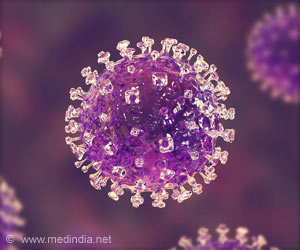MRI scans reveal a groundbreaking biomarker in psychosis, offering earlier diagnosis and paving the way for innovative treatments.

The traditional method for diagnosing psychosis relies on a clinical interview after symptoms appear. But what if we could identify it earlier, even before the first signs emerge? Researchers at the Del Monte Institute for Neuroscience at the University of Rochester believe they’ve identified a potential biomarker in the brain, offering hope for earlier interventions and customized treatment strategies (1✔ ✔Trusted Source
Functional dysconnectivity of visual and somatomotor networks yields a simple and robust biomarker for psychosis
).
The Promise of Brain Biomarkers
“Discovering these biomarkers could fundamentally transform how we diagnose, treat, and support individuals with psychosis,” explains Brian Keane, PhD, an assistant professor of Psychiatry, at the Center for Visual Science, and Neuroscience at the University of Rochester Medical Center. Dr. Keane co-authored a study recently published in Molecular Psychiatry, which highlights how MRI technology can detect brain differences in individuals with psychosis.
Beyond identifying the risk of psychosis before symptoms arise, these biomarkers could play a critical role in patient care. “They could help classify patients into distinct clinical subgroups and pave the way for innovative treatments or interventions,” Keane adds. This advancement has the potential to reshape psychosis care, offering earlier, more personalized, and effective support.
A New Approach to Psychosis Detection
Using data collected by the Human Connectome Early Psychosis Project, researchers looked at MRI scans from 159 participants. These included 105 who developed a psychotic disorder up to five years prior to testing. In the brains of participants with psychosis, researchers found that sensory regions in the cortex were more weakly connected to each other and more strongly connected to the thalamus, the brain’s information relay station.
These differences were confined to the somatomotor network, which processes bodily movement and sensations, and a visual network, which generates representations of objects, faces, and complex features. Combining the dysconnectivity patterns across these two networks allowed the researchers to create a “somato-visual” biomarker.
Implications for Future Care
Previous research has suggested that abnormal brain connectivity exists prominently in the sensory networks of people with schizophrenia, but it remained unclear which networks were most responsible or whether other illness factors, such as antipsychotic use, anxiety, or stress could explain dysconnectivity.
“What makes this biomarker unique is its large effect size, its robustness to over a dozen common confounds, and its high reliability across multiple scans. A single five-minute scan could potentially improve our ability to predict which at-risk individuals will transition to a psychotic disorder, which in turn could allow for more timely treatments or interventions,” Keane said. “It also gives us a place to keep looking. An important next step will be to determine if the somato-visual biomarker emerges before or as psychosis begins.”
Advertisement
Additional authors include Yonatan Abrham, Boyang Hu, and Brent Johnson of the University of Rochester, Carrisa Cocuzza of Yale University, and Michael Cole of Rutgers University. This work was supported by a K01 grant and a Psychiatry Department pilot grant at the University of Rochester.
Reference:
- Functional dysconnectivity of visual and somatomotor networks yields a simple and robust biomarker for psychosis – (https://www.nature.com/articles/s41380-024-02767-3)
Source-Eurekalert



